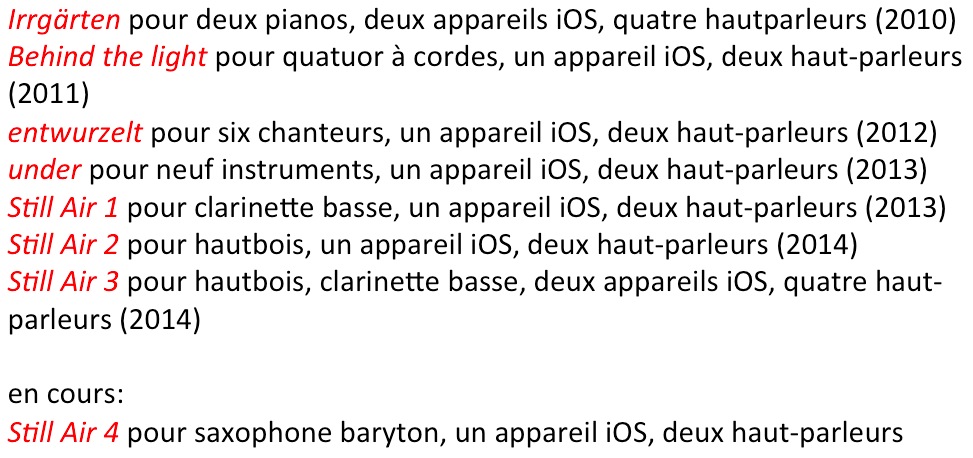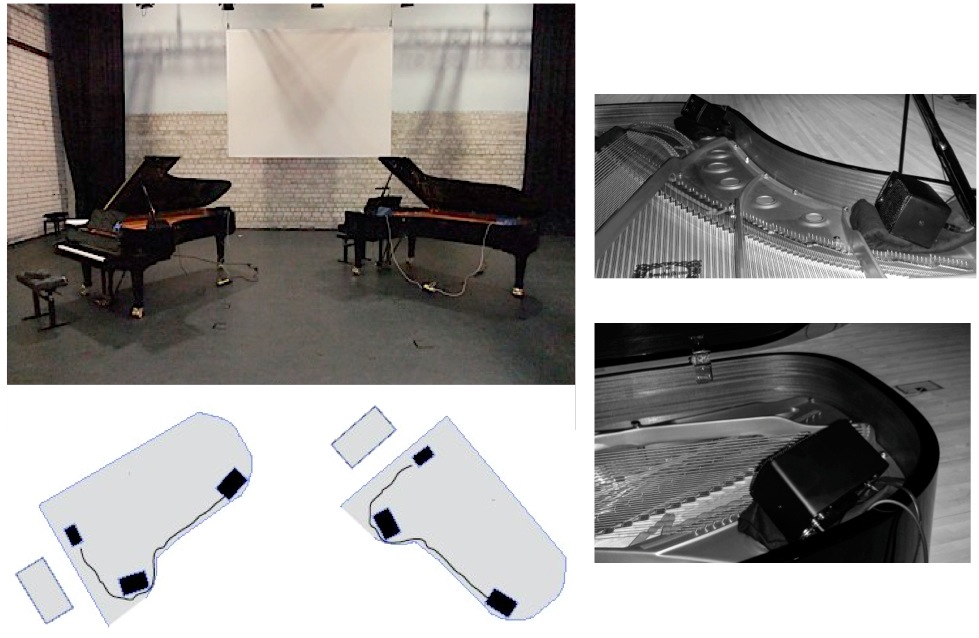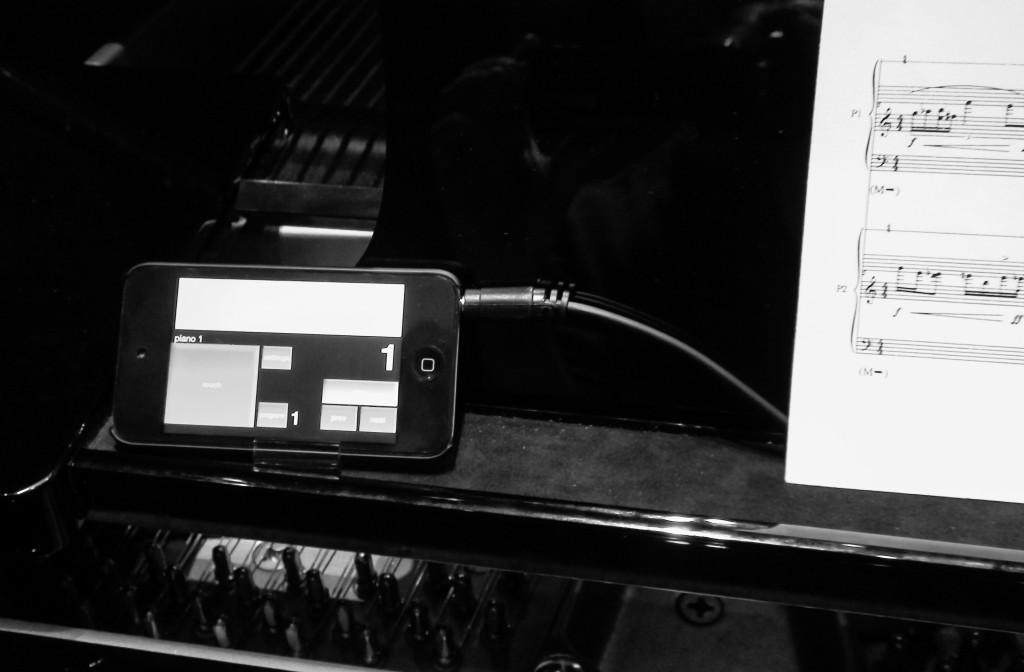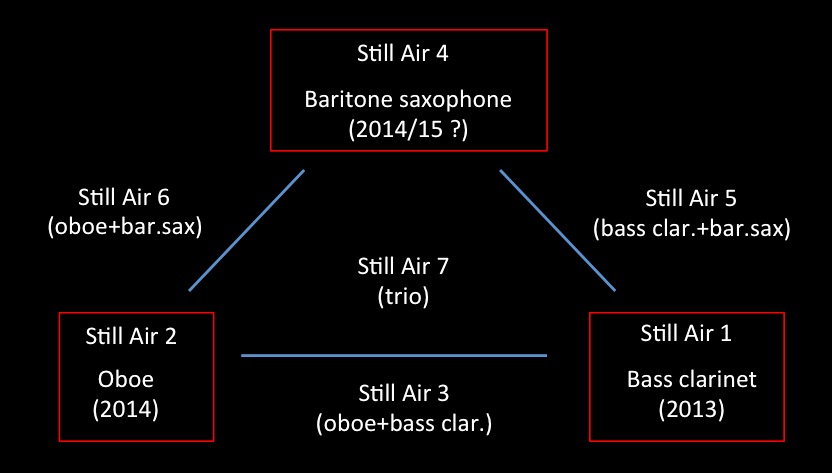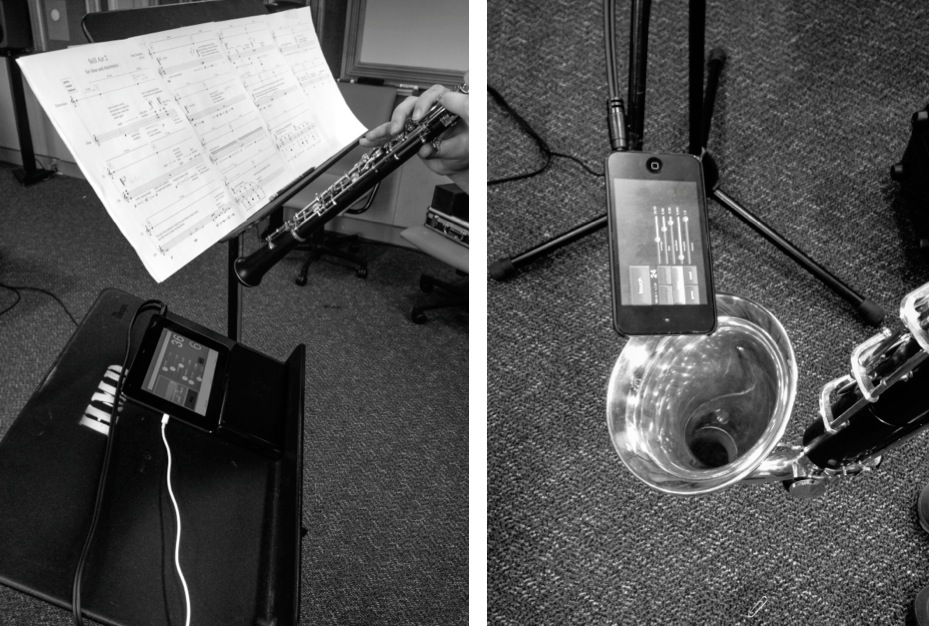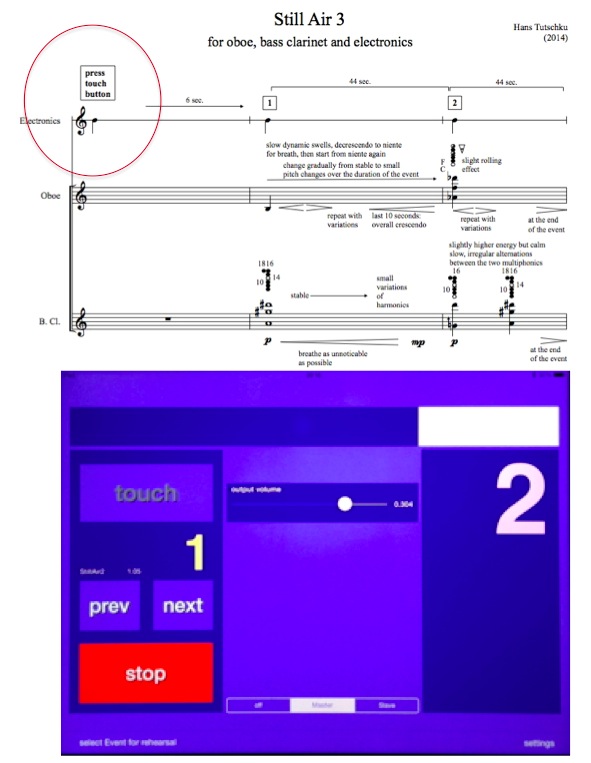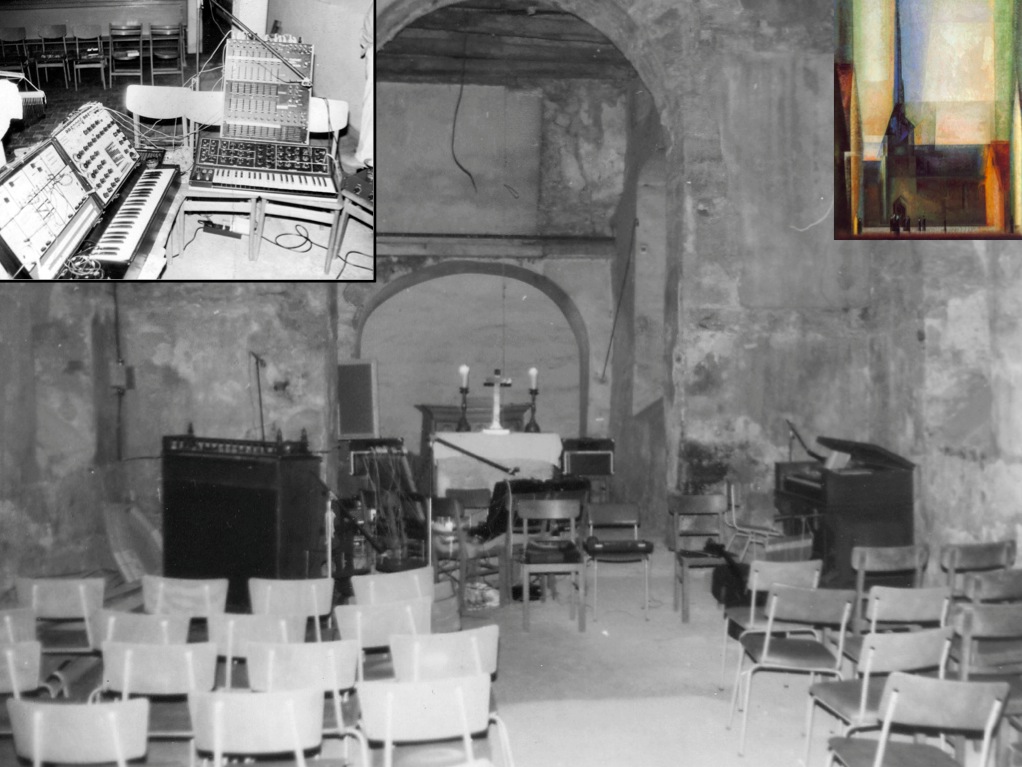iOS
My final chapter today will talk about some ideas on the use of small devices.
Since 2010, I have composed works for instruments / voices and iOS devices. I am interested in their portability, speedy setup, and the possibility that musicians can easily rehearse with the electronics.
The integration of electronic components in the rehearsal process of mixed music remains a difficulty. Many interpreters are not equipped with microphones, sound cards, and suitable computers to work with the electronics in the study of their parts. They rely on the expertise and technology of a sound specialist. These resources are often only available a few rehearsals before concerts, sometimes only on the concert day in the hall. This situation does not give enough time for musicians to integrate the electronic component into their interpretation.
I do not use iOS devices to remotely control a computer; they contain all the electronics. Only the iOS device and small speakers are needed. This helps to integrate the electronics from the beginning of their rehearsals and makes installation easy.
There are of course many compositional limits. The real-time processing of instruments is not an option as the quality of the built-in microphones is not good enough.
So far, a series of composition has been realized with some other works in progress.
In ‘Irrgärten’, each pianist has its own setup with an iOS device and two loudspeakers placed inside the piano, facing the lid. This allows for a balanced mix between acoustic and electronic sounds.
The internal microphone is used with an amplitude follower to detect notes of the instrument and thus synchronize the electronic part with prerecorded sound files.
Here is a short excerpt of this work with Jennifer Hymer and Bernhard Fograscher:
The two pieces ‘Entwurzelt’ and ‘under’ use the iOS device as a sampler, where a musician triggers sequences of prepared sound files at the indicated moments in the score.
I’m currently exploring a third relationship between instruments and the iOS device in the ‘Still Air’ cycle.
Once completed, the cycle will consist of three solo works and all possible combinations between them.
Still Air 1 – bass clarinet
Still Air 2 – oboe
Still Air 3 – bass clarinet + oboe
Still Air 4 – baritone saxophone
Still Air 5 – baritone saxophone + bass clarinet
Still Air 6 – oboe + baritone saxophone
Still Air 7 – bass clarinet + oboe + baritone saxophone
Each instrument has its own installation again, with the device close to the instrument and two speakers behind the musician.
The integrated microphone is used this time to trace the overall energy of the instrument. The electronic component is composed of two layers.
Layer 1 is like a tape, independent of the instrumentalist.
Layer 2 modulates the amplitude (and slightly the pitch) of the sound files by following the amplitude of the instrument. This layer therefore becomes a gestural extension of the instrument.
The musician touches the start button at the beginning and thereafter synchronizes with visual information from the device.
Here is an excerpt of the first performance with Arthur Sato – oboe and Alejandro Acierto – bass clarinet.
To conclude, I’m going back 30 years to a concert in 1985 in the church of Gelmeroda, a village five kilometers from Weimar.
The church is known worldwide as Lyonel Feininger painted it more than 30 times. This concert remains etched in my memory for two reasons: I can trace my interest in the integration of technology as an instrument to that time already, but there was another aspect of this concert which made it special. On the program were several compositions of Karlheinz Stockhausen.
Half an hour before the beginning, a lady of about 90 years came and sat in the front row. With a too common prejudice, I thought she had mistaken the concert. Then, we began to play and I had forgotten about her. After the concert it was this lady who came to me and said, “Thank you for this experience. Now, I can die in peace.” I was shocked and did not understand. She added: “Now I can get an idea how the music will sound in the next century.” She turned and went out.
What a lesson to not underestimate our audience.
There is another phrase, which is very dear to me: “Art changes the world – one person at a time.”
Thank you

